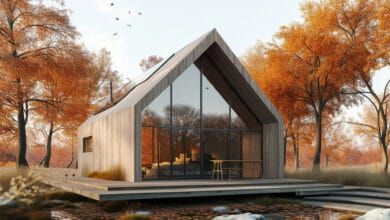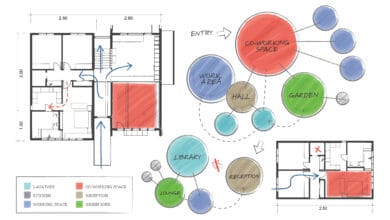10 Legendary Examples of Famous Architecture in Germany

Germany, with its thousand-year history, is a treasure trove of architectural styles. Generations of builders have shaped the landscape, experimenting with bricks, mortar, metal, and glass. Architecture in Germany is not just a physical element but a reflection of cultural identity, diversity, and human beliefs. While architects still feature every major European style, modern buildings now dominate many city skylines. Germany is home to some of the world’s most impressive contemporary structures. Let’s explore some of the famous Architecture in Germany today.
What is famous Architecture in Germany known for?
Germany features a wide range of architectural styles, from city landmarks and castles to rural historic homes. Traditional timber-framed houses and chalets are common in the south, while medieval Baltic brick homes remain in northern towns. In the cities, Gothic and Romanesque blends coexist with Bauhaus, Modernist, and Contemporary buildings.
Every major European style is present, from Roman to Postmodern, including notable examples of Gothic, Carolingian, Romanesque, Baroque, Renaissance, Classical, Modern, and International Style Architecture. Centuries of division into principalities and kingdoms led to a heterogeneous style with significant regional diversity, fostering a variety of vernacular styles across the country.
History of Architecture in Germany
The famous Architecture in Germany you see today boasts a long, rich, and varied history. Spanning over 600 millennia of human existence and covering 357,021 km², the country’s architectural styles are diverse. Historic cities like Berlin, Munich, and Cologne showcase the entire spectrum of German architectural trends, from the pre-medieval Carolingian to Medieval
Romanesque, Renaissance, Baroque, Gothic, and the later Neo-Classical and Neo-Renaissance periods. While these trends dominated urban areas, rural regions during the medieval and early modern periods featured various houses, such as the Low German House in northern Germany and the High German House in Central Germany.
A look at Germany’s Most Famous Architectural Highlights
1. Elbphilharmonie, Hamburg
Hamburg, Germany’s second-largest city, is home to an art-inspired building. Since its opening in 2017, the Elbphilharmonie has become the city’s landmark building. Designed by Herzog & de Meuron, the building experienced delays and exceeded budget. People quickly forgot the difficulties once the building opened its doors. The beautiful opera house now impresses with its exterior design, interior acoustics, a viewing platform with breathtaking views of Hamburg, and much more.
2. Nymphenburg Palace
The Bavarian kings spent their summers at Munich’s splendid Baroque mansion, Nymphenburg Palace. After centuries of construction starting in 1664, the palace emerged as an outstanding structure surrounded by expansive gardens and water features. Designers exquisitely decorated its interior with Chinese collections, paintings, and stucco work. Nymphenburg Palace, offering insights into Bavarian royal history and culture, remains one of Munich’s most popular tourist attractions.
3. Hohenzollern Castle
Many people associate Germany with stunning castles, including Neuschwanstein and the lesser-known Hohenzollern Castle. Perched on Mount Hohenzollern, 855 meters above sea level, the Hohenzollern Castle ranks among the most famous Architecture in Germany.
4. Brandenburg Gate
The famous Brandenburg Gate is a late 18th-century neoclassical structure in the heart of Berlin. Designed by Carl Gotthard Langhans, it was meant to stand as a gateway to Berlin and symbolize peace. The gate has witnessed significant historical events, including Napoleon’s invasion of Berlin and the fall of the Berlin Wall in 1989. Today, it represents German democracy and unity.
5. Stadtbibliothek, Stuttgart (2011)
The Stadtbibliothek in Stuttgart is one of Germany’s most notable libraries. It is a stunning building that attracts both bookworms and Instagrammers.
While the exterior is a simple concrete block, the interior is white to create a sense of openness and peace, allowing colorful book spines to stand out. At night, the library transforms into a glowing blue light sculpture.
6. Würzburg Residence
The Würzberg Residence is a magnificent Baroque palace in southern Germany, surrounded by beautifully manicured gardens and natural landscapes. Built in the 18th century by a team of international artists, sculptors, and architects, it was the former residence of Prince-Bishop Johann Philipp Franz von Schönborn. Its design incorporates influences from Germany, France, and Vienna, resulting in an impressive and enchanting structure and decoration.

7. Cologne Cathedral
A perfect example of Gothic Architecture, the Cologne Cathedral was also named a UNESCO World Heritage Site in 1996. Completed in the 13th century, the cathedral’s twin towers rise to 515 feet (157 meters), making it the largest Gothic church in northern Europe.
8. Aachen Cathedral (c. 800)
Aachen Cathedral, dating back to the eighth century, is a famous Architecture in Germany and a prime example of Carolingian, Gothic, and Baroque styles. Much of the cathedral’s mystique stems from its association with Emperor Charlemagne, who ordered its construction and is buried within. The cathedral is open to visitors when services are not being held.
9. Naumburg Cathedral
Naumburg Cathedral, dating back to the 13th century, is an outstanding example of Medieval Architecture and a well-known landmark of the late Romanesque style in Germany. It is also a significant sacred cultural monument from the European High Middle Ages. It was designed by an unknown German architect known as the “Naumberg Master” and includes a three-part crypt, a statue of St. Elizabeth of Hungary, and a treasury vault filled with manuscripts, sculptures, and altars.
10. Sanssouci Palace
Frederick the Great of Prussia planned the Sanssouci Palace, a Rococo-style palace in Potsdam in the 18th century. The palace, designed to create a sense of carefree delight (“sans souci” means “without worry” in French), served as Frederick’s summer hideaway. Sanssouci Palace was labeled as a UNESCO World Heritage Site, celebrated for its extensive grounds, which include the well-known Vineyard Terrace, luxurious interiors, and tiered grapes. It is an excellent example of the Prussian rulers’ opulent lifestyle and artistic patronage.
Conclusion
Famous Architecture in Germany reflects a rich historical legacy and diverse cultural influences, represented by remarkable buildings across the country. Majestic palaces, churches, and iconic structures offer a glimpse into Germany’s past, present, and future. These historic sites provide an extraordinary journey into the heart and soul of this captivating country, drawing visitors with the romance of fairy-tale castles and the bleak reminders of Germany’s complex history.



